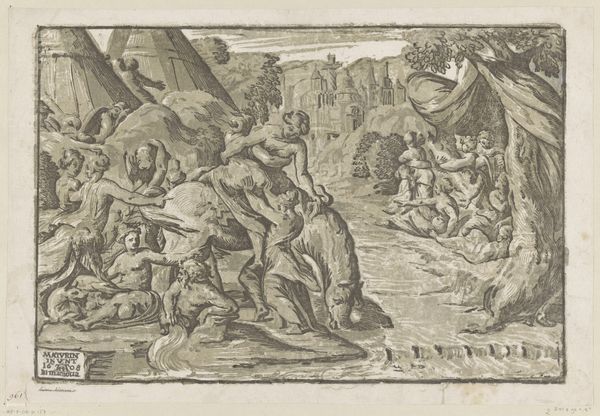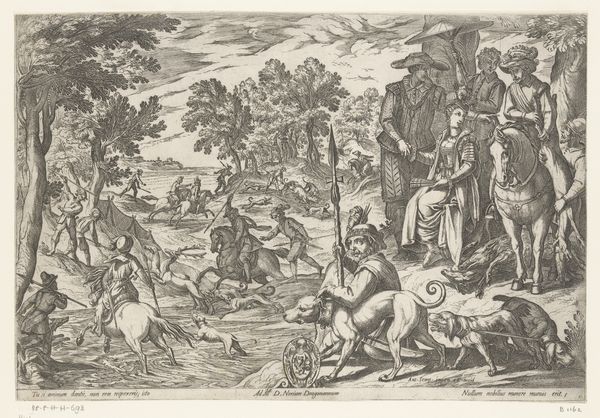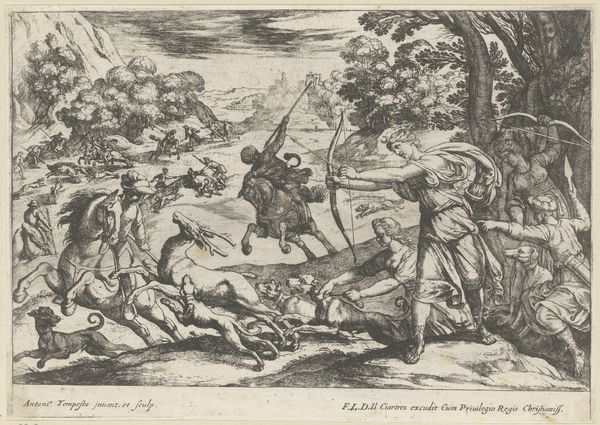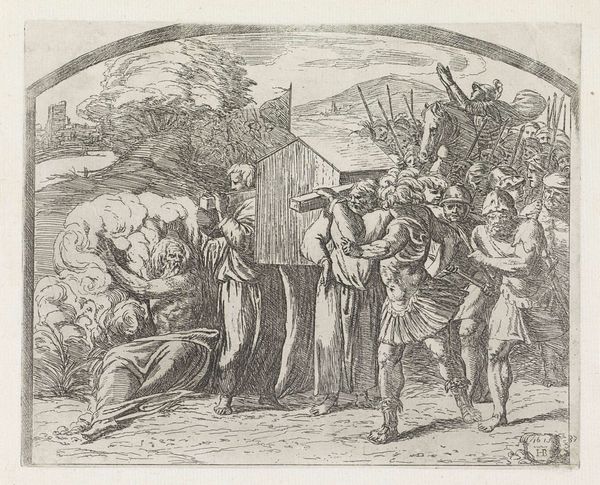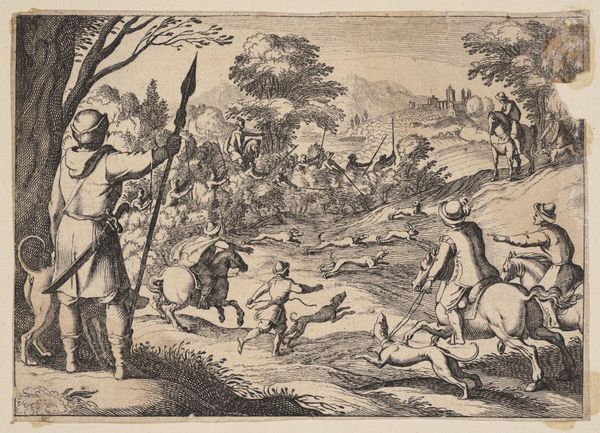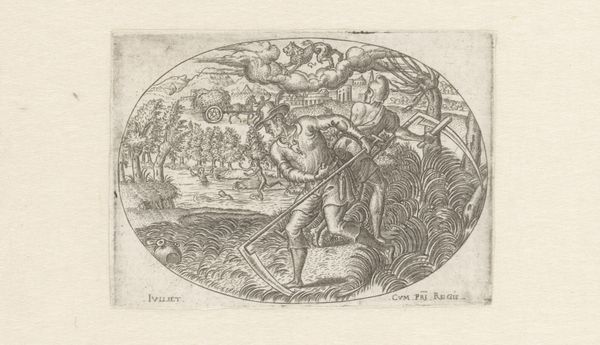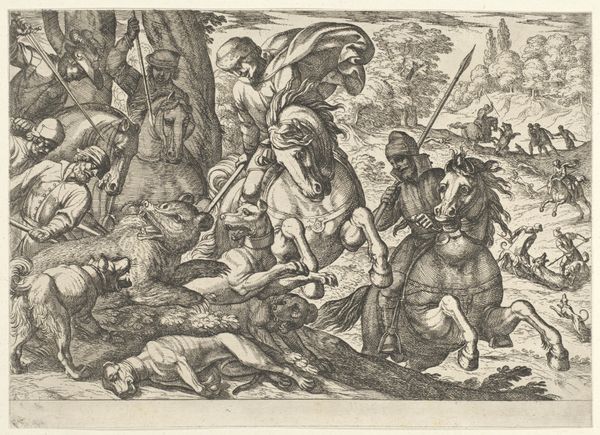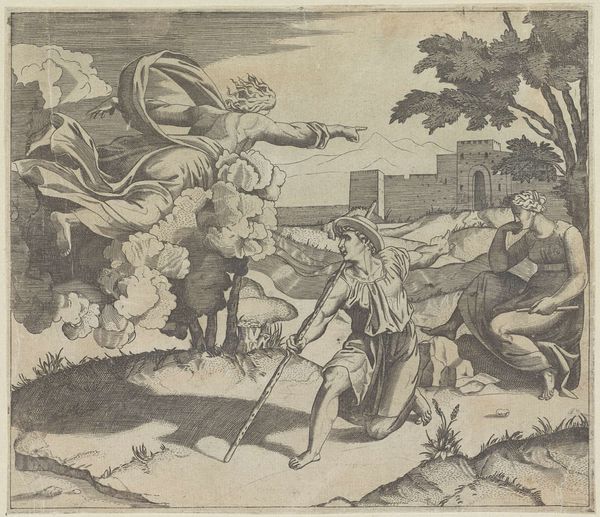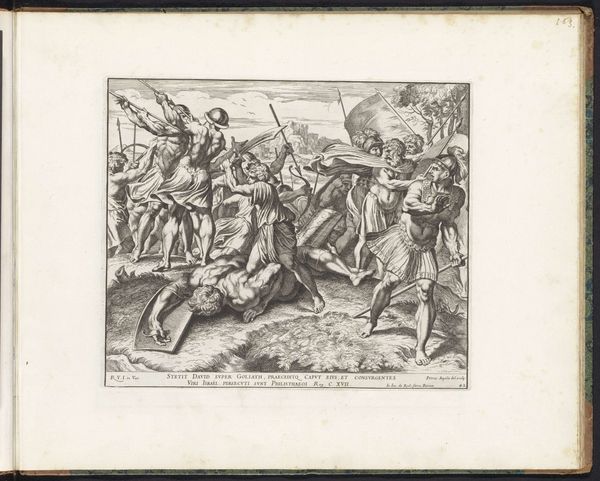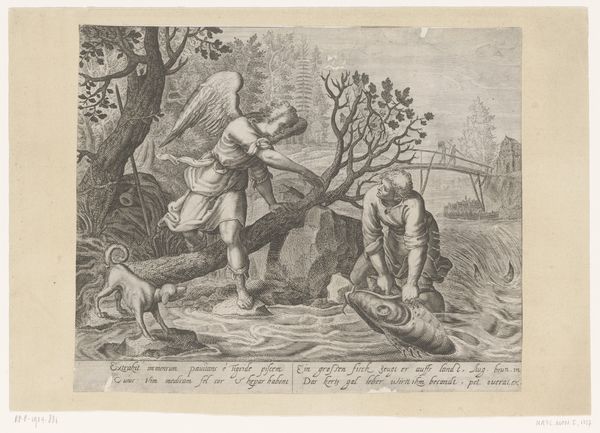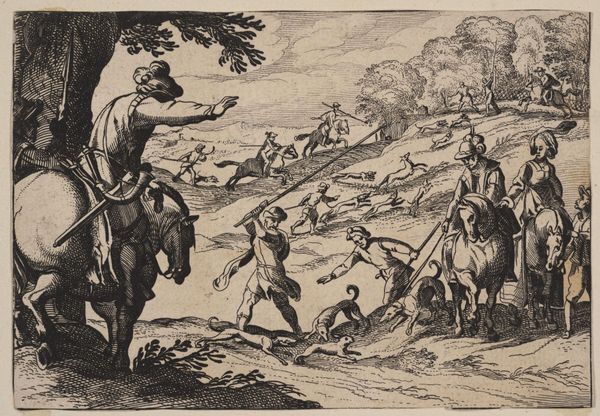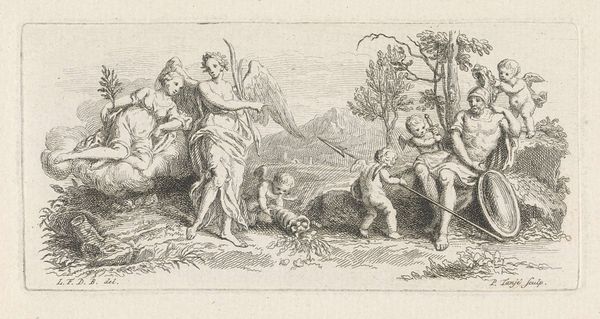
Romulus en Remus gevonden door Faustulus en Louva 1660 - 16890
0:00
0:00
marcantoniobellavia
Rijksmuseum
Dimensions: height 123 mm, width 175 mm
Copyright: Rijks Museum: Open Domain
Curator: This is an engraving by Marcantonio Bellavia, made sometime between 1660 and 1689. The Rijksmuseum calls it "Romulus en Remus gevonden door Faustulus en Louva"—"Romulus and Remus Found by Faustulus and Louva." Quite a mouthful, isn't it? Editor: My first thought? What a swirl of energy! So much happening. I can feel the tension in the figures, almost a franticness, despite it supposedly being a moment of rescue. Curator: Absolutely! It captures the frenzy of the scene, that mythical discovery. We're seeing the moment when Faustulus, the shepherd, and his wife Louva stumble upon the abandoned twins Romulus and Remus. There's a distinctly Baroque flair—dynamic composition, dramatic use of light and shadow. You feel that push and pull. Editor: The power dynamics are fascinating. Even in their infancy, Romulus and Remus are passively reliant on figures representing differing masculinities: divine intervention manifested in the winged figure on the right and the brawny labor of the male figure dragging the wooden frame into the river to get the floating children. What can we infer from that? Curator: Well, mythmaking, of course! Reinforcing this idea of divinely appointed founders. The artist positions it within a very masculine landscape of power. Notice, even Louva, she's present but observant, participating indirectly in this foundational narrative. Editor: Yes, her demure posture compared to the assertive gestures of the men around her really does amplify a social commentary! I also can't help but think about how the narrative minimizes the role of the she-wolf. Rewriting the traditional myth in favor of men doing what only men do best—creating a nation, perhaps? Curator: You've nailed it! Bellavia definitely seems more interested in emphasizing this theme of patriarchal foundation. It's less about the nurture, more about the, well, *conquest* that is implicitly there. This rendering downplays, or even omits, the she-wolf's compassion altogether. This also resonates with so much myth-making since then. Editor: Absolutely. This piece has opened up some serious discussions about how these visual narratives help perpetuate, not simply illustrate, cultural narratives, isn't it? It really prompts some self-interrogation about what visual stories we allow and prioritize in today’s world. Curator: Indeed. Every flick of the artist’s wrist offers up some really thoughtful historical perspectives and their possible societal ramifications in our present.
Comments
No comments
Be the first to comment and join the conversation on the ultimate creative platform.
